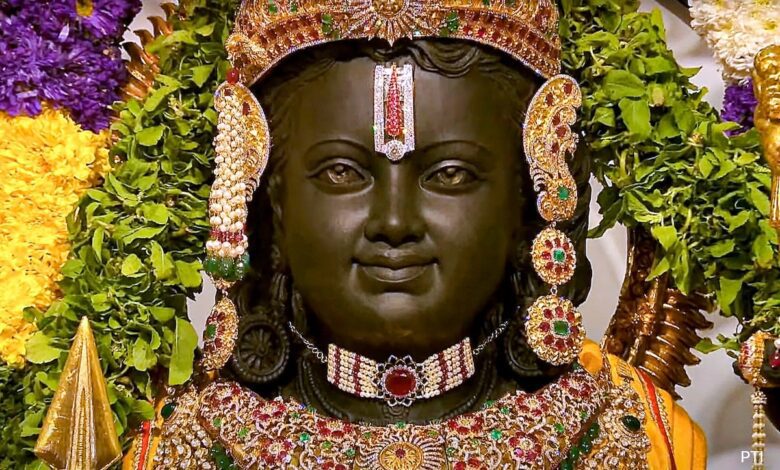Ram Lalla idol now renamed as ‘Balak Ram’
The 'Balak Ram' idol is crafted from a special black granite stone believed to be 2.5 billion years old

In a momentous event on January 22, the Ram temple in Ayodhya saw the consecration of the new Ram Lalla idol, now named “Balak Ram.” This decision is rooted in the depiction of Lord Ram as a five-year-old boy in a standing posture, explained Arun Dixit, a priest involved in the ceremony.
Arun Dixit, based in Varanasi and with significant experience in consecrations, expressed the profound impact of this event. He described it as the most divine and supreme experience among the 50-60 ceremonies he has conducted. “The first time I saw the idol, I was thrilled, and tears started rolling down my face. I cannot explain the feeling I experienced then,” he shared.
The 51-inch idol of Ram Lalla was crafted from a special black granite stone sourced from Karnataka, believed to be a staggering 2.5 billion years old. HS Venkatesh, Director of the National Institute of Rock Mechanics (NIRM) in Bengaluru, confirmed the age of the stone. NIRM conducted physico-mechanical analysis tests, asserting the rock’s durability and resistance to climatic variations, ensuring it can withstand the subtropical zone for thousands of years with minimal maintenance.
Union Science Minister Jitendra Singh highlighted the temple’s construction, emphasizing the use of high-quality stones, traditional architectural designs, and modern engineering and science techniques for durability. Singh declared that the temple is designed to last for more than 1,000 years.
The stone for the idol was carefully selected from the village Jayapura Hobli in Mysuru district, known for its high-quality granite mines. The rock’s origins trace back to the pre-Cambrian era, which began over four billion years ago, adding a historical and geological significance to the idol.
The transformation of the stone into the Ram Lalla idol was entrusted to Arun Yogiraj, a 38-year-old sculptor from Mysuru hailing from a family with five generations of sculptors. Arun Yogiraj spent nearly six months meticulously crafting the idol, adding a personal touch and generations of artistic expertise to the sacred image.
The choice of material and the craftsmanship involved highlight the meticulous planning and dedication invested in creating an enduring symbol of Lord Ram. The convergence of ancient stone, traditional craftsmanship, and modern engineering is a testament to the reverence and significance attributed to the Ram temple.
As the ceremony unfolded, emotions ran high, and the unveiling of “Balak Ram” marked not just a religious event but a cultural and artistic milestone. The deeply rooted symbolism of Lord Ram as a young child resonates with devotees, adding an emotional and spiritual dimension to the newly consecrated idol.
In the heart of Ayodhya, where history and mythology intertwine, the grand Ram temple stands as a testament to faith, tradition, and the enduring spirit of cultural heritage. The consecration of “Balak Ram” is not merely an event; it is a chapter etched in the annals of India’s rich tapestry, reflecting the timeless bond between art, spirituality, and history.
You might also be interested in –Kalyan Singh: The Chief Minister’s Sacrifice for Ram Temple and Humanity



